When the weather gets hot many dogs prefer to spend their day curled up on the couch, and if that couch happens to be more than seven years old, it could cause health problems for your pooch.
Couches and chairs made before 2004 were treated with a flame-retardant chemical called PBDE, and according to a study in the journal Environmental Science & Technology, this chemical can enter the bloodstream of animals and cause health problems. Humans can be affected by this as well, but studies showed that PBDE levels in dogs tested were 5 to 10 times higher than in people.
PBDE has been taken off the market since 2004, but many people who have older sofas and own pets may want to consider buying newer furniture.
Thursday, June 30, 2011
Wednesday, June 29, 2011
The Amazing African Grey Parrot
We all know that parrots and other birds can learn to talk, and they will often learn and imitate sounds and phrases they’re exposed to. However, the African grey parrot is one bird that has demonstrated abilities far beyond just imitation.
This first video shows an African grey named Alex who actually demonstrated the ability to count and determine shapes and color when working with researchers. Unfortunately Alex is no longer with us, but other parrots have since demonstrated these amazing abilities.
This next video is all about having fun. Einstein the African grey parrot is a huge star for her ability to imitate and do impressions of all kinds of things…
As incredible as these birds are, they’re quite a commitment to own as pets. So before you decide that a parrot is right for you, consider that African greys can live to be 60 years old!
This first video shows an African grey named Alex who actually demonstrated the ability to count and determine shapes and color when working with researchers. Unfortunately Alex is no longer with us, but other parrots have since demonstrated these amazing abilities.
This next video is all about having fun. Einstein the African grey parrot is a huge star for her ability to imitate and do impressions of all kinds of things…
As incredible as these birds are, they’re quite a commitment to own as pets. So before you decide that a parrot is right for you, consider that African greys can live to be 60 years old!
Tuesday, June 28, 2011
How Bats Save You Money
The next time you buy bread, fruits or vegetables at the grocery store, take a moment and thank a bat. While they may not be the cutest creatures in the world, without these flying mammals you would likely be spending a lot more money on food.
In an article published by the Science journal this past spring, biologists reported that bats may save us up to 53 billion dollars per year in agricultural pest control. 70% of all bat species are insectivores, and even small brown bats no larger than a human thumb can eat up to eight grams of insects per night, drastically reducing the amount of pesticides we need to use on crops. Our hungry bat friends help the forest too. By reducing insect populations, trees and plants are less prone to dying from disease.
Unfortunately, diseases like white nose syndrome and the popularity of wind turbine power stations in the Great Plains are having a negative effect on bat populations. Conservationists are now working on ways to help protect and preserve these beneficial animals, which have declined up to 70% in some states in recent years.
In an article published by the Science journal this past spring, biologists reported that bats may save us up to 53 billion dollars per year in agricultural pest control. 70% of all bat species are insectivores, and even small brown bats no larger than a human thumb can eat up to eight grams of insects per night, drastically reducing the amount of pesticides we need to use on crops. Our hungry bat friends help the forest too. By reducing insect populations, trees and plants are less prone to dying from disease.
Unfortunately, diseases like white nose syndrome and the popularity of wind turbine power stations in the Great Plains are having a negative effect on bat populations. Conservationists are now working on ways to help protect and preserve these beneficial animals, which have declined up to 70% in some states in recent years.
Monday, June 27, 2011
Saving the California Condor
The California condor is the largest bird in North America. With their nearly 10 foot wingspans, these majestic scavengers have never had any real natural predators, yet they became nearly extinct just a few decades ago.
California condors were plentiful throughout the southwest United States and northern Mexico until relatively recently. However, loss of habitat, egg poaching, and incorrect assumptions by ranchers who thought the massive birds had actually killed the livestock carcasses they were feeding on led to the California condor’s decline. This combined with the fact that the birds mature and reproduce very slowly meant that even after the species received protection, populations did not recover.
In 1987, conservationists made the unprecedented move of capturing all 22 California condors remaining in the wild for a captive breeding program at California Zoos at a cost of 35 million dollars. By 1991, the birds began being reintroduced in the wild at national parks and wildlife sanctuaries in California and Arizona. California condors can live up to 60 years, and as of April, 2011, there are 181 of them living in the wild, with an additional 200 in captivity. Hopefully this majestic animal, a symbol for the southwest its native tribes, will flourish again in years to come.
California condors were plentiful throughout the southwest United States and northern Mexico until relatively recently. However, loss of habitat, egg poaching, and incorrect assumptions by ranchers who thought the massive birds had actually killed the livestock carcasses they were feeding on led to the California condor’s decline. This combined with the fact that the birds mature and reproduce very slowly meant that even after the species received protection, populations did not recover.
In 1987, conservationists made the unprecedented move of capturing all 22 California condors remaining in the wild for a captive breeding program at California Zoos at a cost of 35 million dollars. By 1991, the birds began being reintroduced in the wild at national parks and wildlife sanctuaries in California and Arizona. California condors can live up to 60 years, and as of April, 2011, there are 181 of them living in the wild, with an additional 200 in captivity. Hopefully this majestic animal, a symbol for the southwest its native tribes, will flourish again in years to come.
Friday, June 24, 2011
An Emperor Penguin in New Zealand?
People were shocked this past Tuesday morning on Peka Peka Beach in New Zealand when an Emperor Penguin came waddling out of the water. Somehow this penguin, whose natural habitat is Antarctica, ended up 4000 miles away on New Zealand’s north island. Wildlife experts assume that the bird got disoriented while hunting for food in the ocean, and may have made much of the journey on an ice floe. This is the country’s first wild penguin sighting in over 40 years.
Conservationists originally decided that it would be best to not interfere and hope that the penguin, estimated to be about 10 months old, would find its way back home. However, the penguin has recently been taken to a zoo hospital, as it has become ill from eating wet sand, mistaking it for snow.
The penguin has been named Happy (after the movie Happy Feet), and everyone is hoping he’ll be healthy enough to be released soon.
Source
Conservationists originally decided that it would be best to not interfere and hope that the penguin, estimated to be about 10 months old, would find its way back home. However, the penguin has recently been taken to a zoo hospital, as it has become ill from eating wet sand, mistaking it for snow.
The penguin has been named Happy (after the movie Happy Feet), and everyone is hoping he’ll be healthy enough to be released soon.
Source
Thursday, June 23, 2011
Oryx: The "Arabian Unicorn"
From the side, with their luminous white coats and the appearance of a single horn, it’s easy to see where the Arabian oryx got its nickname. Historically common throughout the Middle East, the oryx, a type of antelope, was driven to extinction in the wild in the early 1970’s.
However, National Geographic is reporting that wild Arabian oryx numbers have now surpassed 1000, marking the first time in history that an animal once extinct in the wild has recovered to the point of no longer being considered endangered. Hopefully, this and other future conservation efforts will be able to help pull even more amazing species’ of animals back from the brink of extinction!
| Photo: National Geographic |
Wednesday, June 22, 2011
The Goose Parade
Tuesday, June 21, 2011
Camels of the American West
When you think of the American West in the 1800’s, the animals that usually come to mind are horses, bison, and donkeys, right? Well, for a short time in the 19th century, you could add camels to that list as well.
Known throughout the world for their capabilities in dry and harsh conditions, camels appeared to be an ideal choice for U.S. Army troops stationed in the desert southwest to use as pack animals. The idea gained ground in the 1850s when it was given support by U.S. senators’ Jefferson Davis and George Perkins Marsh, who convinced congress to appropriate $30,000 to purchase a herd of 50, along with native drivers.
The first camel shipment arrived in Texas in 1856, and the animals proved their worth to the Army almost immediately, moving across terrain impossible for horses to traverse while requiring very little water. An additional 41 camels arrived early the next year, and the animals set to work surveying and hauling loads throughout the southwest. Politicians attempted to lobby congress to purchase an additional 1000 camels, but with the Civil War looming the idea was quickly abandoned.
After the “Camel Corps” idea was scrapped, most of the remaining animals were either sold off to private owners, or simply set free by soldiers ordered to return east for the war effort. Some owners attempted to use their camels for freight hauling and packing businesses, but were largely unsuccessful, leading to a small feral camel population in the western U.S. and Canada. The last feral Army camels were spotted in the early 1930’s in California and British Columbia. And although none have been seen since, it is rumored that descendants of those original Army camels still roam the southwest today.
| Dromedary camel. Photo: Jron |
The first camel shipment arrived in Texas in 1856, and the animals proved their worth to the Army almost immediately, moving across terrain impossible for horses to traverse while requiring very little water. An additional 41 camels arrived early the next year, and the animals set to work surveying and hauling loads throughout the southwest. Politicians attempted to lobby congress to purchase an additional 1000 camels, but with the Civil War looming the idea was quickly abandoned.
| Ex-Army camel in Canada, 1860's |
Monday, June 20, 2011
Local Animal Shelter Breaks Adoption Record
In local animal news, one of our biggest area animal shelters, Kansas City's Wayside Waifs, had their Adopt-A-Thon this past weekend, offering half-price adoptions on Saturday and Sunday. Amazingly, the shelter set an all-time record with 316 animals adopted!
Wayside Waifs was one of many animal shelters in the Midwest that volunteered to take on lost and orphaned animals after the tornadoes that affected our area in May. With over 300 pets on their way to happy homes after this weekend, this no doubt gives them a lot of extra space!
| Photo: Kimberley Wall via The Examiner |
Friday, June 17, 2011
One Hungry Lion, Two Nervous Parents!
A video that’s been making the rounds lately shows a family visiting the lion area at the Cheyenne Mountain Zoo in Colorado. Their 1 year-old son is quite interested in being up close and personal with a lioness, who seems just as interested in him! With only an inch of safety glass between lion and baby, it’s no wonder his parents were a little nervous!
| Lioness - Photo: Schuyler Shepherd |
Thursday, June 16, 2011
Kate and Pippin
This is one of those things that just makes you smile. A year or so ago a baby fawn was abandoned by its mother on photographer Isabel Springett’s property. After about three days she decided to rescue the fawn, naming it Pippin, and the baby deer was immediately adopted by Springett’s Great Dane, Kate. Over the next year Springett chronicled the growth and friendship of the dog and deer in a series of videos and photographs.
According to her videos, Pippin, now fully grown, has gone off to live with other deer, but still visits Isobel and Kate every day.
 |
| Photo: Isobel Springett |
According to her videos, Pippin, now fully grown, has gone off to live with other deer, but still visits Isobel and Kate every day.
Wednesday, June 15, 2011
Secret Agent Squirrel
If there’s one thing squirrels love, it's food; and they’re capable of remembering some pretty complex directions to get to it, too!
This video from England shows a squirrel traversing a variety of obstacles, similar to a Rube Goldberg machine, to get to a prized bowl of nuts. Apparently the owners constructed the machine a bit at a time, rewarding the squirrel with food at the end of each section. After about two weeks, the squirrel was able to make it through the entire machine. Very Ethan Hunt!
This video from England shows a squirrel traversing a variety of obstacles, similar to a Rube Goldberg machine, to get to a prized bowl of nuts. Apparently the owners constructed the machine a bit at a time, rewarding the squirrel with food at the end of each section. After about two weeks, the squirrel was able to make it through the entire machine. Very Ethan Hunt!
Tuesday, June 14, 2011
The Fastest Animal in the World (really)!
Most of us were taught growing up that the cheetah is the fastest animal that exists. While it is true that the cheetah is the fastest animal on earth, just a few thousand feet up, it’s a different story.
The peregrine falcon, a bird of prey common to most of the world, actually holds that title. The peregrine almost exclusively preys upon birds that it catches in mid-air. To hunt, it either perches or soars high above the ground scanning for birds. When prey is spotted, the falcon folds in its wings and feet to streamline itself, and begins a high-speed dive, called a stoop. In this dive, the falcon may reach speeds of over 200mph, usually stunning its prey by striking it with a closed talon.
Until recently, scientists were unsure just how fast peregrine falcons really went in their dives. In the below video by National Geographic, scientists were able to record one such dive where the falcon reached 242mph! And they may be able to go even faster…
The peregrine falcon, a bird of prey common to most of the world, actually holds that title. The peregrine almost exclusively preys upon birds that it catches in mid-air. To hunt, it either perches or soars high above the ground scanning for birds. When prey is spotted, the falcon folds in its wings and feet to streamline itself, and begins a high-speed dive, called a stoop. In this dive, the falcon may reach speeds of over 200mph, usually stunning its prey by striking it with a closed talon.
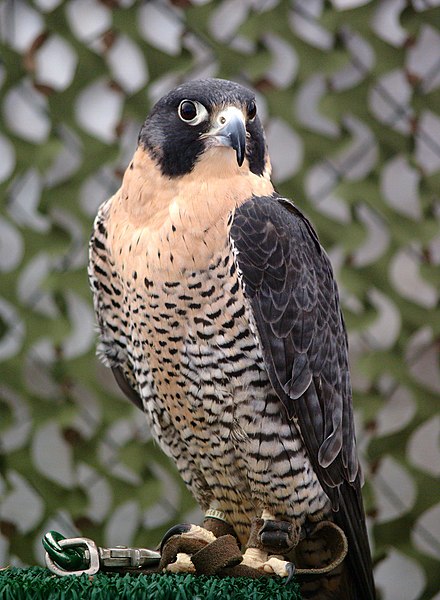 |
| Peregrine falcon in captivity. Photo: Carl Mueller |
Monday, June 13, 2011
The Wisest Tortoise of Them All
When we think about animals with long life spans, usually large mammals such as horses and elephants come to mind. While it is true that some other animals such as catfish, buzzards, and some lizards can live as long or longer than humans, the true “fountain of youth” animal has got to be the giant tortoise. These huge land-going tortoises, specifically the Galapagos tortoise and the Aldabra giant tortoise, weigh more than 500lbs and can live well in excess of 100 years.
The longest-lived tortoise ever recorded was named Adwaita. Adwaita was born in 1750 in the Seychelles islands, where he was captured by British seafarers and brought to India as a gift to British nobleman General Robert Clive, who kept the tortoise as a pet. Adwaita was transferred to the Alipore zoo in India in 1875, and continued to live there until his passing on March 23rd, 2006. Scientists’ carbon dated Adwaita’s shell and determined that he was 255 years old at the time of his death.
The longest-lived tortoise ever recorded was named Adwaita. Adwaita was born in 1750 in the Seychelles islands, where he was captured by British seafarers and brought to India as a gift to British nobleman General Robert Clive, who kept the tortoise as a pet. Adwaita was transferred to the Alipore zoo in India in 1875, and continued to live there until his passing on March 23rd, 2006. Scientists’ carbon dated Adwaita’s shell and determined that he was 255 years old at the time of his death.
 |
| Adwaita in 2005. Photo: AP |
Friday, June 10, 2011
A Lizard You Don't Want to Mess With!
Life as a lizard can’t be easy. Think about it. You’re tiny, cold blooded (so you can’t move that fast when it’s chilly), and there’s all kinds of creatures in your neighborhood that would like nothing better than to have you for lunch.
To deal with these stresses, the horned lizard has developed some unique weapons to make him seem positively unappetizing. First off, he’s tough to see. These lizards have the same ability as chameleons to alter their skin color and blend in to the terrain around them. If a predator does manage to spot the lizard, it will puff up its body, making it appear even larger, spinier, and harder to swallow.
If, however the horned lizard continues to be harassed, it will employ one of the weirdest defensive weapons in the animal kingdom; it will shoot blood from its eyes. The horned lizard can voluntarily reduce the blood flow leaving its head, which in turn causes blood vessels in the eyelids to rupture. The lizard can aim this red stream with remarkable accuracy at targets up to five feet away! This is usually enough to deter a hungry coyote, as the blood tastes foul to them.
If you do happen to spot one of these nasty-looking fellows on a hike, don’t worry; they never deploy their weapons unless provoked. Just walk on by; he’s got ants to eat.
To deal with these stresses, the horned lizard has developed some unique weapons to make him seem positively unappetizing. First off, he’s tough to see. These lizards have the same ability as chameleons to alter their skin color and blend in to the terrain around them. If a predator does manage to spot the lizard, it will puff up its body, making it appear even larger, spinier, and harder to swallow.
 |
| Photo: Ben Goodwyn |
 |
| Photo: Zylorian |
Thursday, June 9, 2011
Dolphins Making Bubble Rings
For years, scientists have recognized dolphins as being some of the smartest animals in the world, perhaps even more intelligent than monkeys or other primates. Their complex social structure and problem-solving abilities have fascinated people for centuries, but one of the coolest things they do seems to be just for fun; they make bubble rings.
With a puff of its blowhole, a dolphin can create these beautiful spinning rings of air as large as a basketball rim. They will often observe them, push them around, then bite them into progressively smaller rings before they finally dissipate and rise to the surface. Only a select few people have ever seen this in the wild, and no one is quite sure how they learn to do it, but it sure is cool!
Check out the video from SeaWorld below to see more of this awesome phenomenon!
 |
| Photo Credit: SeaWorld |
Check out the video from SeaWorld below to see more of this awesome phenomenon!
Wednesday, June 8, 2011
How Animals Keep Their Cool
Now that summer’s here, a lot of us probably plan on spending our free time at the pool. When it’s hot outside, nothing’s better than jumping into some nice, cool water to relax. But, when a/c or an ice-cold dip isn’t an option, our bodies still find a way to keep us cool; we sweat. Animals in the wild don’t have the option to crank up the air conditioner when they get too hot, so they’ve developed their own ways to cool down.
Now, we all know that dogs will pant when they get hot, as their tongues are very effective at releasing heat from their bodies, but did you know they also sweat from their feet? Dogs don’t have a lot of sweat glands like we do, but if overheated they can sweat from between their toes. Other mammals such as squirrels sweat in this same way. Cows can sweat from their muzzles, and rabbits sweat from their lips, though neither nearly as much as humans. Birds have no sweat glands at all, so they will flare their feathers and open their mouths in hot weather to increase their surface area and evaporate water from the surface of their bodies.
Have you ever heard the phrase “sweating like a pig”? Well, that’s not really possible, because pigs don’t sweat at all. To regulate their body temperatures, pigs have to roll in mud or water, which draws the heat from their bodies. They look like a mess, but they’re just trying to stay cool!
Cold-blooded animals such as reptiles, amphibians, and fish have body temperatures that are the same as the air or water around them, and do not sweat. Land-going reptiles that are too hot will do their best to find shade or burrow into cool soil. If shade is not available, some have the ability to lighten their skin color, making it more reflective. Fish often seasonally migrate to deeper, cooler waters to regulate their temperatures.
Of course, we’re not the only ones who enjoy a nice swim in hot weather. Have a safe and happy summer!
_panting.jpg) |
| Photo: CoolFox |
 |
| Photo: Rene Modery |
 |
| Photo: Andrew Smith |
 |
| Photo: Phillip Halling |
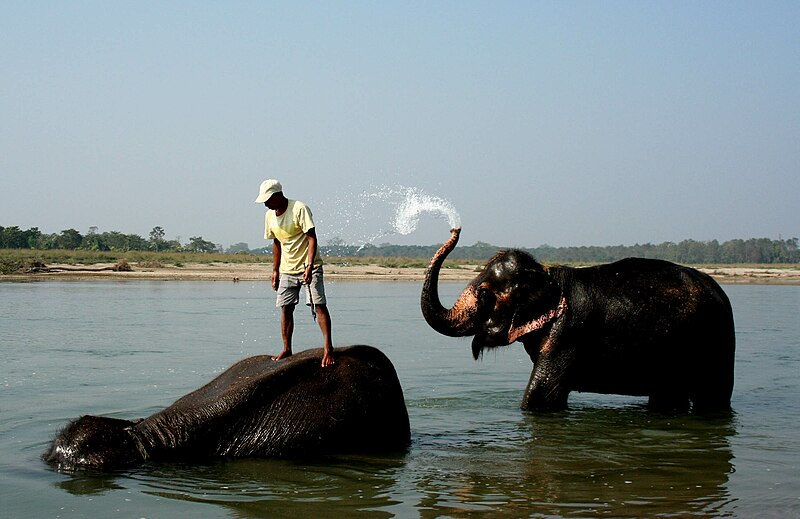 |
| Photo: Wen-Yan King |
Tuesday, June 7, 2011
It's National June Bug Day!
As many of us spend our evenings relaxing outside this summer, we may receive all-too-frequent visits from the clumsy little Junebug. These inch-long beetles buzz about the night sky running into walls, getting in your hair, and doing just about anything they can to get to that oh-so-inviting porch light you have turned on.
Named as they are because of the time of year they become most common, Junebugs are actually any one of over 260 species of New World scarab beetles (phyllophaga) that emerge from the ground (where they’ve been living as larvae for the past three years) every spring to look for food and a mate.
They might not be the cutest little creatures around; but relax, they’re harmless. Junebugs feed almost exclusively on tree leaves, and they don’t bite or sting. If you like to spend your summer evenings in the backyard, simply turning off any outside lights will cut down on the intrusion, as Junebugs are attracted to just about any light source. And if the buzzing gets to be too much for you, just remember that these little critters are only looking for love!
 |
| Photo: Patrick Coin |
They might not be the cutest little creatures around; but relax, they’re harmless. Junebugs feed almost exclusively on tree leaves, and they don’t bite or sting. If you like to spend your summer evenings in the backyard, simply turning off any outside lights will cut down on the intrusion, as Junebugs are attracted to just about any light source. And if the buzzing gets to be too much for you, just remember that these little critters are only looking for love!
Monday, June 6, 2011
Are Horses Wild After All?
As much as horses are a symbol of the American West, it has long been accepted and taught in textbooks that they are not a native species. Historians are certain that these animals were brought to North America in the 15th and 16th centuries by Spanish explorers, and that the current populations of wild mustangs are descendents of those domesticated horses.
However, according to a report by the Los Angeles Times, federal courts are hearing a case that may change that belief, as animal rights groups are presenting DNA evidence suggesting that wild horses may have roamed North America over 1 million years ago, and that today’s horses are genetically linked to them.
If this case can be proven in court, it may change the way wild mustangs are treated in the United States. Currently, free-roaming horses are classified as no more a wild animal than cattle, and the Bureau of Land Management (BLM) can legally control their population and corral them as necessary to allow enough land for cattle grazing. If mustangs were to become classified as native wild animals, they would have a right to graze on rangeland just as antelope and bison do, and the BLM would no longer be able to displace them for the purposes of commercial cattle feeding.
 |
| Wild mustangs - Photo: BLM |
However, according to a report by the Los Angeles Times, federal courts are hearing a case that may change that belief, as animal rights groups are presenting DNA evidence suggesting that wild horses may have roamed North America over 1 million years ago, and that today’s horses are genetically linked to them.
If this case can be proven in court, it may change the way wild mustangs are treated in the United States. Currently, free-roaming horses are classified as no more a wild animal than cattle, and the Bureau of Land Management (BLM) can legally control their population and corral them as necessary to allow enough land for cattle grazing. If mustangs were to become classified as native wild animals, they would have a right to graze on rangeland just as antelope and bison do, and the BLM would no longer be able to displace them for the purposes of commercial cattle feeding.
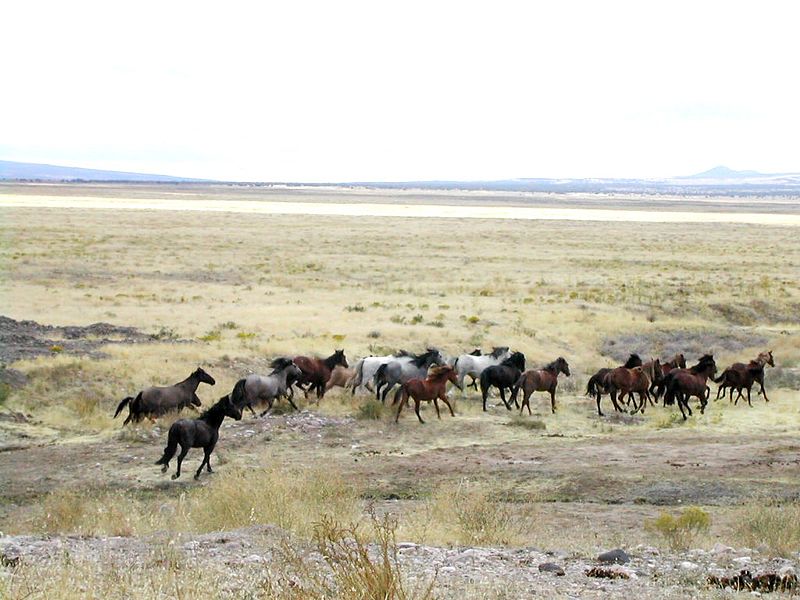 |
| Wild mustangs - Photo: Jaime Jackson |
Friday, June 3, 2011
Wild Elk Return to Missouri
When most people think of elk, they picture the mountainous landscapes of the American West. The truth is, before European settlement these animals were most common throughout the Eastern and Midwestern United States. Missouri Department of Conservation officials have sought for years to reintroduce native elk, which have been absent since 1865, to the state’s landscape, and as of just a few days ago it seems they’ve finally succeeded.
The 34 elk that will comprise this first herd were captured in a Kentucky conservation area, home to 1500 elk, and trucked to Missouri in May. The elk were confined to a 3 acre holding pen at Peck Ranch Conservation Area for their first few weeks in Missouri to allow them time to acclimate to their new home. On June 1st, the gates to the pen were quietly opened and the elk herd, now with an additional five newborn calves, was allowed access to their entire 221,000 acre range.
All of the animals have been fitted with GPS radio collars, allowing experts at the University of Missouri to track the herd’s movement. The Peck Ranch Conservation area is currently closed to the public to allow the herd to acclimate without human interruption, but state officials are hopeful that the elk herd will grow and eventually become a draw for tourists and wildlife lovers alike.
 |
| Photo: Missouri Dept. of Conservation |
All of the animals have been fitted with GPS radio collars, allowing experts at the University of Missouri to track the herd’s movement. The Peck Ranch Conservation area is currently closed to the public to allow the herd to acclimate without human interruption, but state officials are hopeful that the elk herd will grow and eventually become a draw for tourists and wildlife lovers alike.
 |
| Photo: Missouri Dept. of Conservation |
Thursday, June 2, 2011
Road-Tripping with your Pooch
Now that summer has arrived, I’m sure a lot of you are planning on taking a family vacation, and if you’re like me, the entire family includes the dog. Dogs can be great traveling companions, and are usually happy just to be with their people. However, if you take a few extra steps you can make your next road trip more fun for everyone.
To start, make sure your pup is acclimated to riding comfortably in your car for close to the length of the trip you have planned. The car should be large enough that they have plenty of room to stretch out or stand up if they want to. In other words, no Great Danes in a subcompact! If you have leather or vinyl seats, put down a sheet or towel to give your pup some more walking traction, and consider a seatbelt harness if he or she just won’t stay put.
If your dog tends to get carsick, consider feeding him a couple of ginger snaps right before the trip. Ginger has long been used to treat nausea in people, and it helps with dogs too. An elevated perch that allows them to look outside the vehicle can provide a sense of equilibrium and help calm their nerves as well. Also, be sure to take along more water than you’ll likely need. Dogs can have sensitive stomachs, and switching them immediately to a different water source when you reach your destination can make them sick. Instead, mix in some of the water you brought with the new water until your pup gets used to it.
Finally, some dogs just can’t be let loose in the car, so the use of a properly-sized crate may be necessary. Just keep in mind that crates aren’t always near a/c vents, so you’ll need to be especially watchful that your pup doesn’t overheat, and include a pet crate fan if possible. Be sure to stop frequently for water breaks, and never leave your dog in a hot car!
To start, make sure your pup is acclimated to riding comfortably in your car for close to the length of the trip you have planned. The car should be large enough that they have plenty of room to stretch out or stand up if they want to. In other words, no Great Danes in a subcompact! If you have leather or vinyl seats, put down a sheet or towel to give your pup some more walking traction, and consider a seatbelt harness if he or she just won’t stay put.
If your dog tends to get carsick, consider feeding him a couple of ginger snaps right before the trip. Ginger has long been used to treat nausea in people, and it helps with dogs too. An elevated perch that allows them to look outside the vehicle can provide a sense of equilibrium and help calm their nerves as well. Also, be sure to take along more water than you’ll likely need. Dogs can have sensitive stomachs, and switching them immediately to a different water source when you reach your destination can make them sick. Instead, mix in some of the water you brought with the new water until your pup gets used to it.
Finally, some dogs just can’t be let loose in the car, so the use of a properly-sized crate may be necessary. Just keep in mind that crates aren’t always near a/c vents, so you’ll need to be especially watchful that your pup doesn’t overheat, and include a pet crate fan if possible. Be sure to stop frequently for water breaks, and never leave your dog in a hot car!
As always, you should consult your veterinarian for any specific pet travel issues, but hopefully these tips can help make your next trip more enjoyable for every member of your family.
 |
| Photo Credit: LNJ |
Wednesday, June 1, 2011
Snakes Alive!
Happy June, everyone! In case you didn’t know, June is the month of the snake, and to celebrate, I thought I’d show you a few of the biggest snakes in the world. But don’t worry; you’re not likely to find either of these giants in your backyard anytime soon!
Our first contestant is the reticulated python. Native to the rainforests of Southeast Asia , these pythons can grow to 28 feet in length, making them the longest snake in the world! They’re not poisonous, but they don’t have to be. They hunt by constricting their coils around any kind of live animal they can catch.
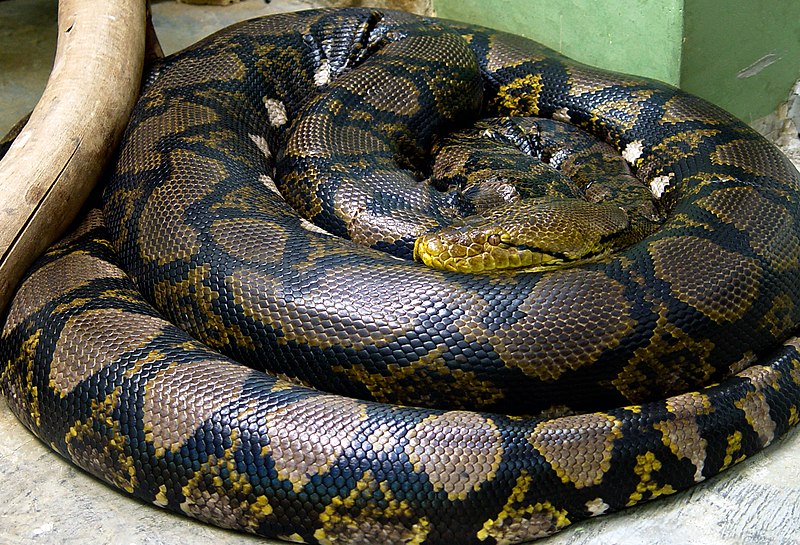 |
| Reticulated Python - Photo: Mariluna |
While not as long as the reticulated python, our next snake is a real heavyweight. The green anaconda, native to the Amazon rainforest can be as big around as an adult male and can weigh up to an astonishing 215lbs! They’re not short, either; with the longest recorded measuring 16 feet. Although they may be slow on land, the green anaconda spends most of its time in water, where it’s an excellent swimmer. Like pythons, anacondas are not poisonous, and hunt using their incredible constricting strength.
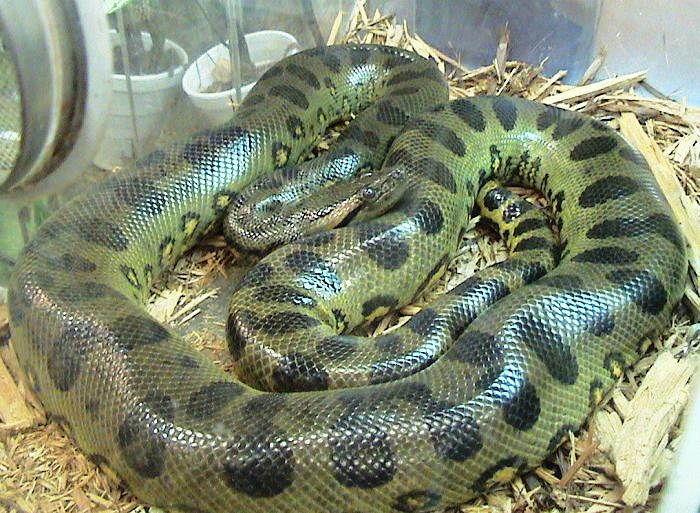 |
| Green Anaconda - Photo: L.A. Dawson |
Subscribe to:
Posts (Atom)
